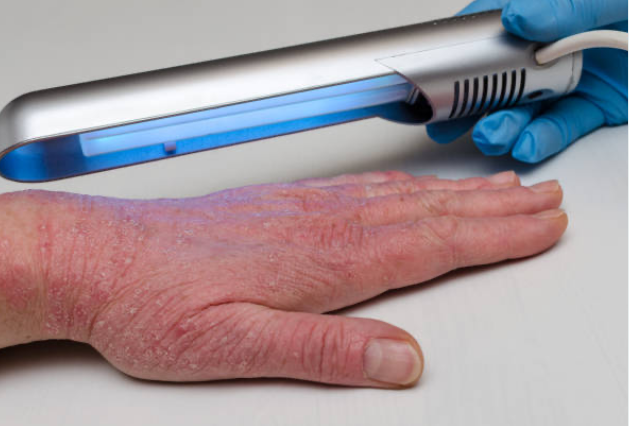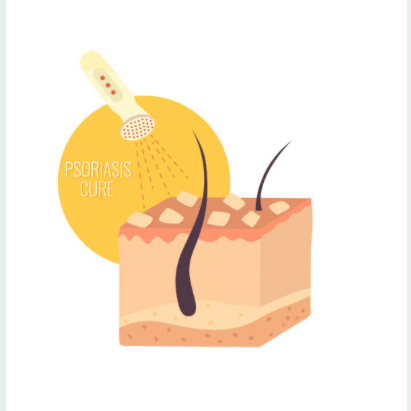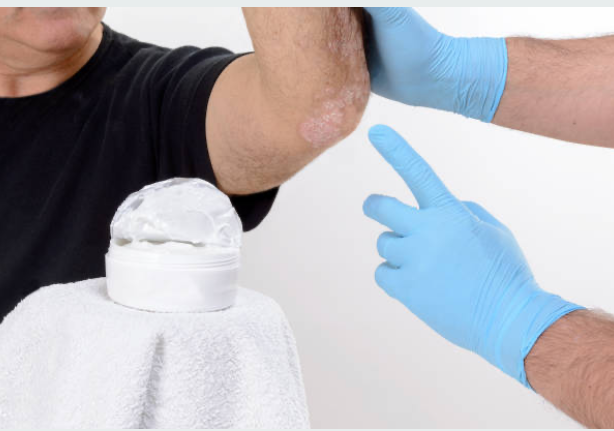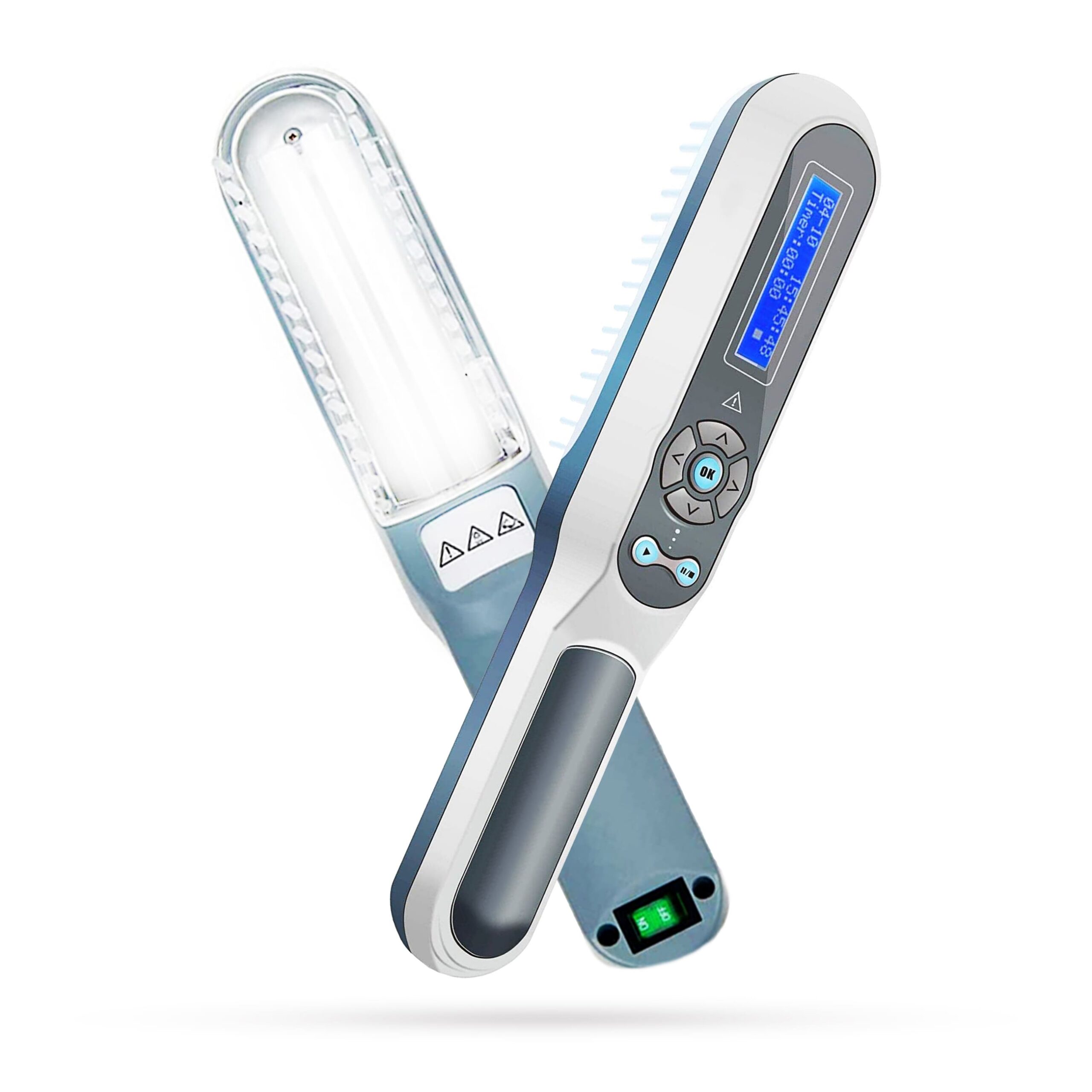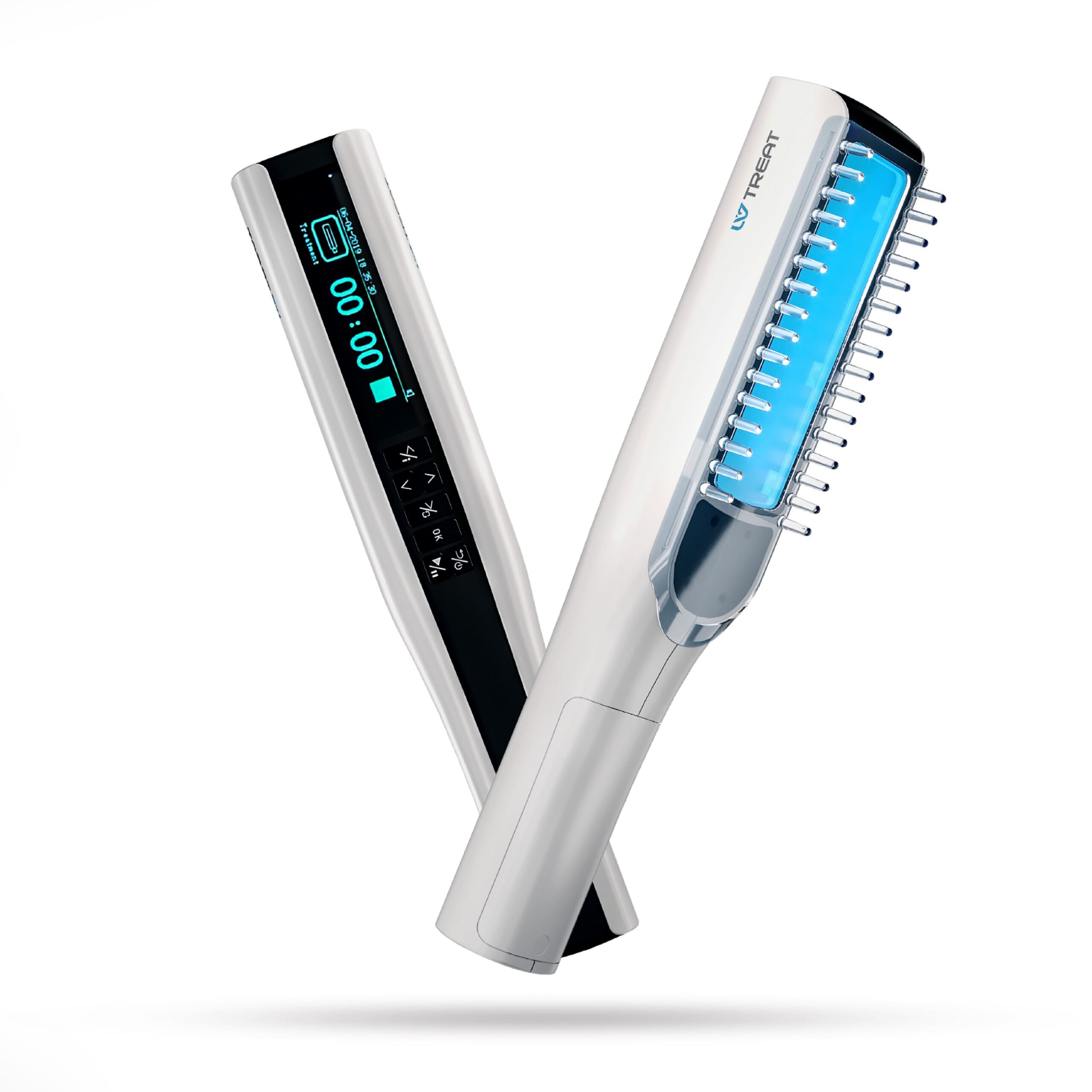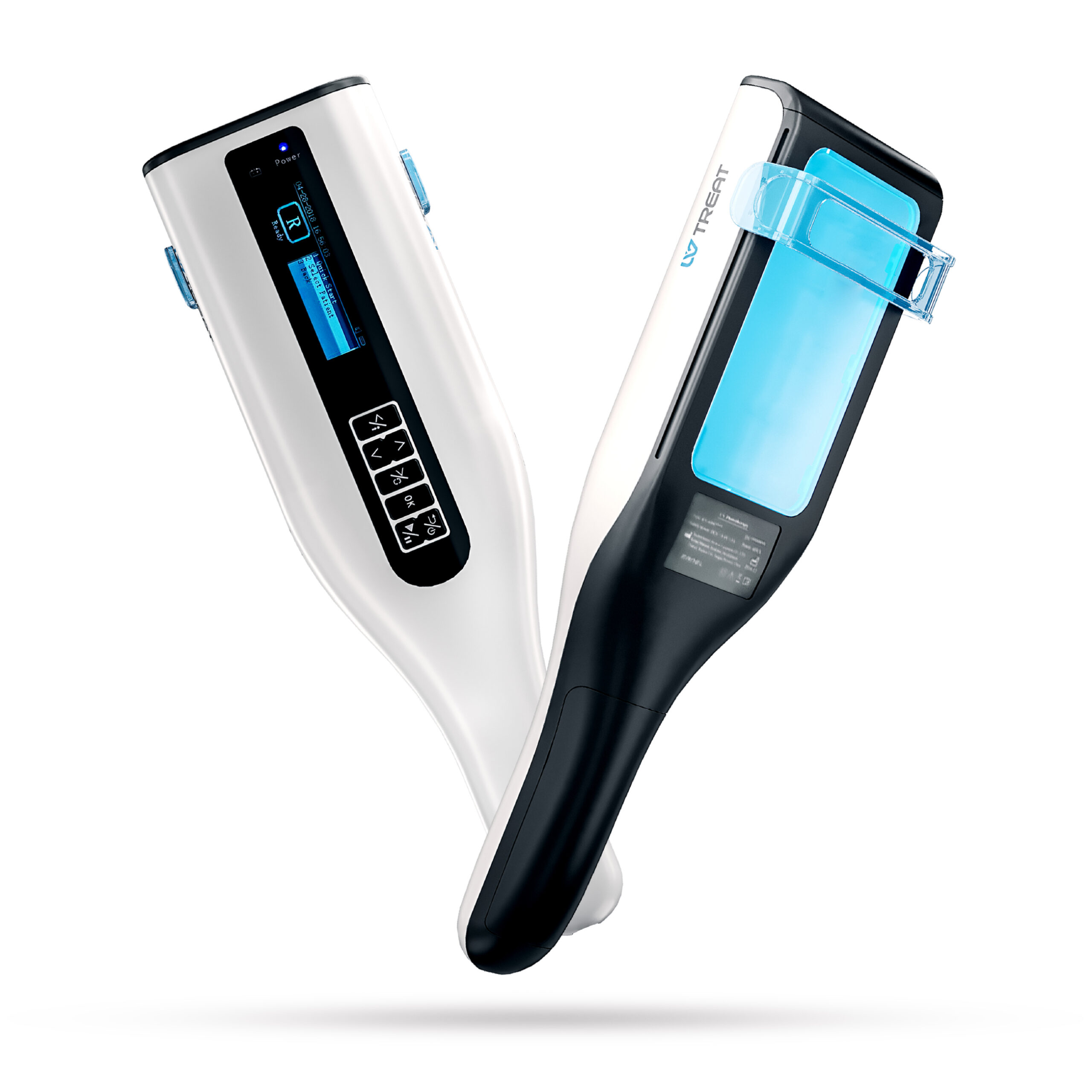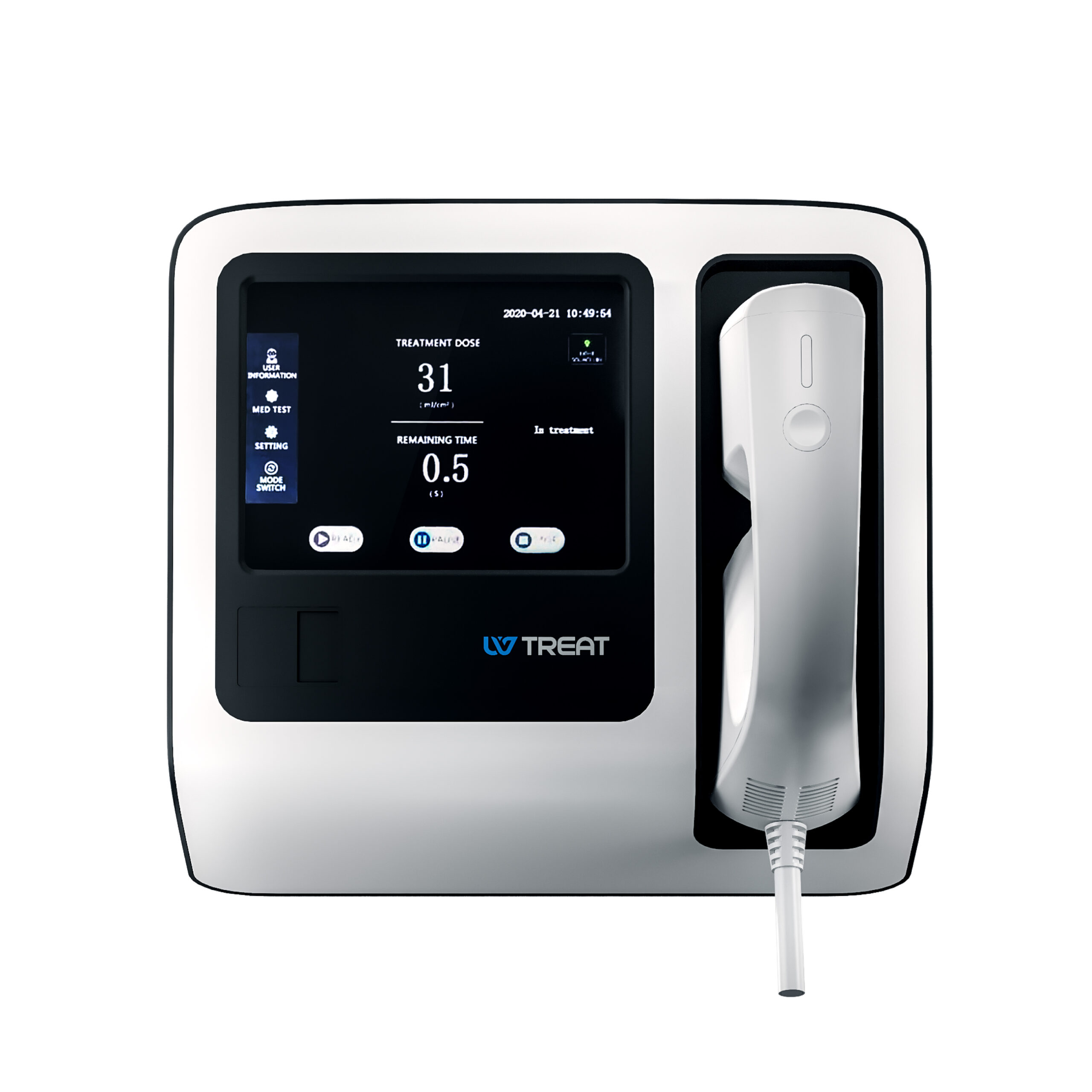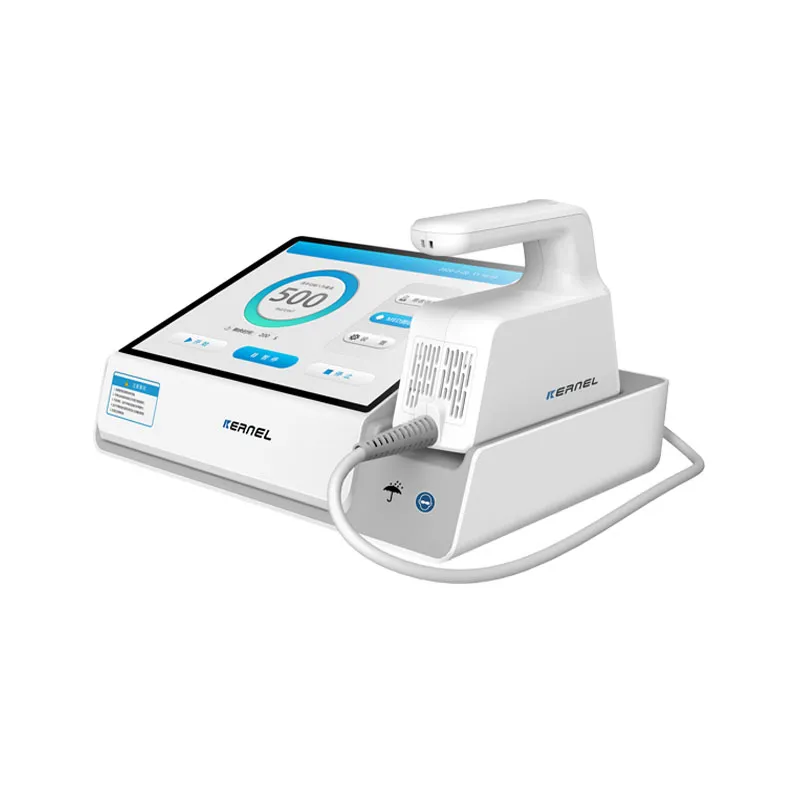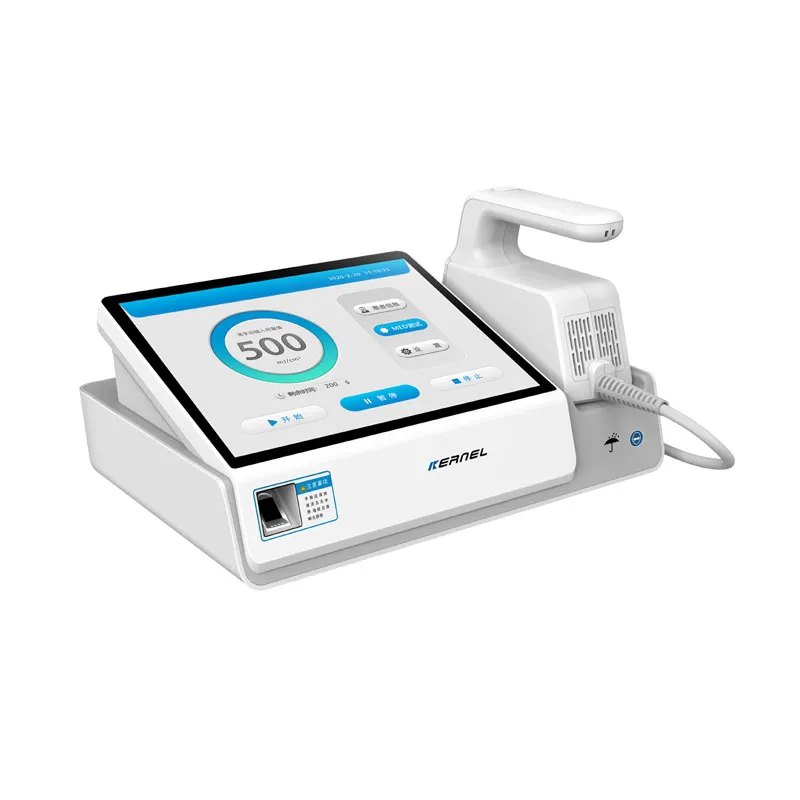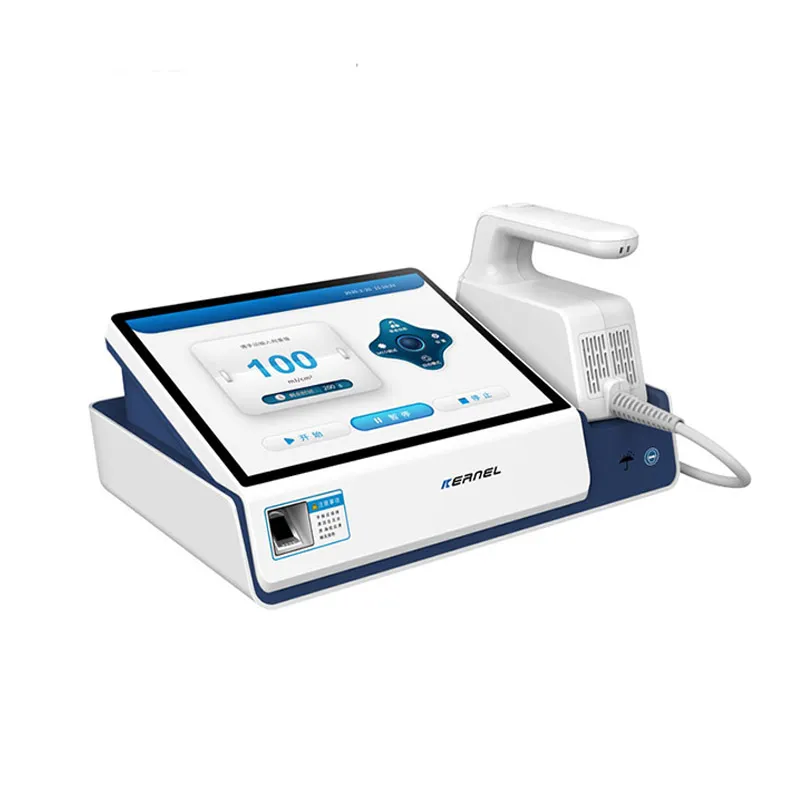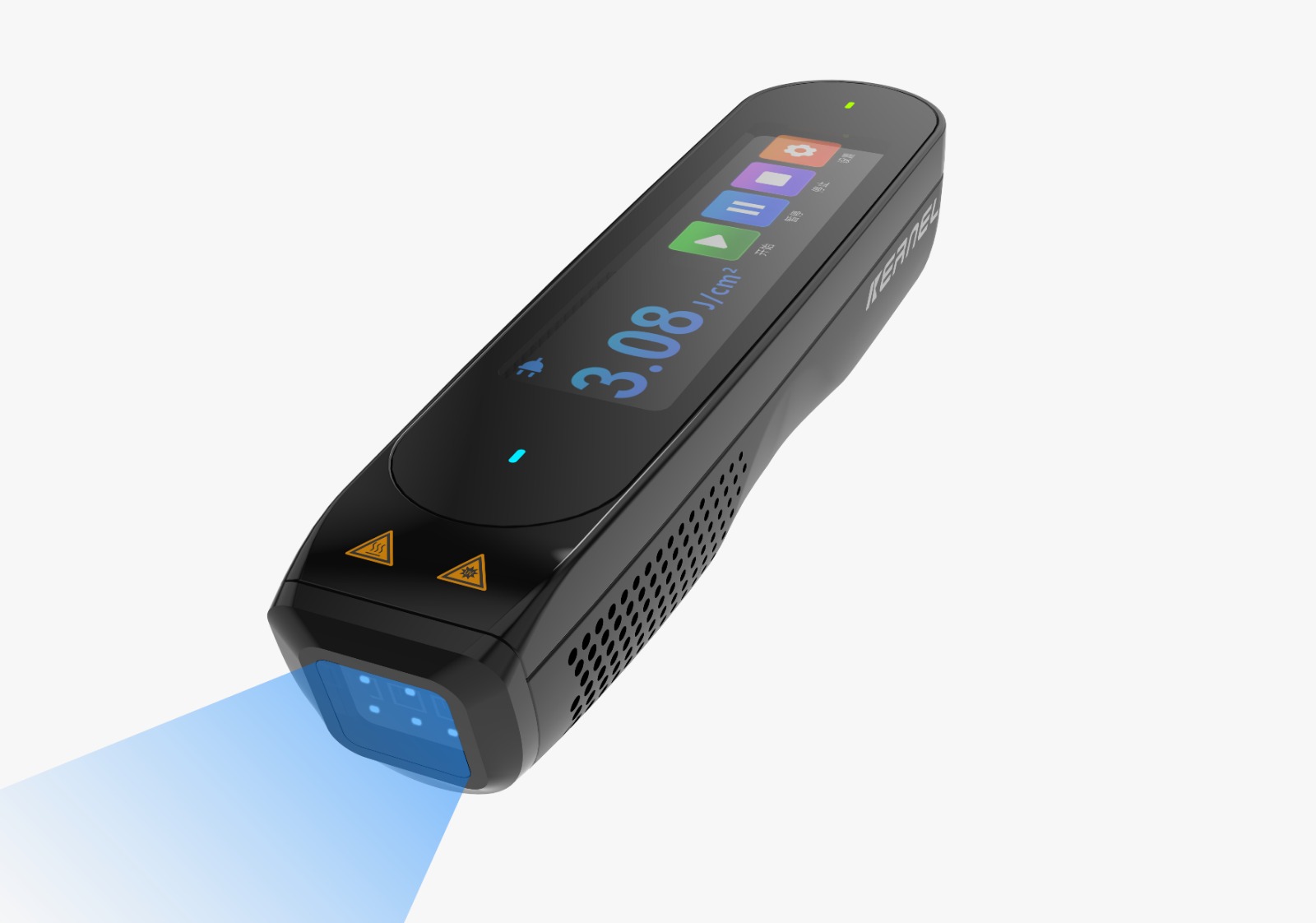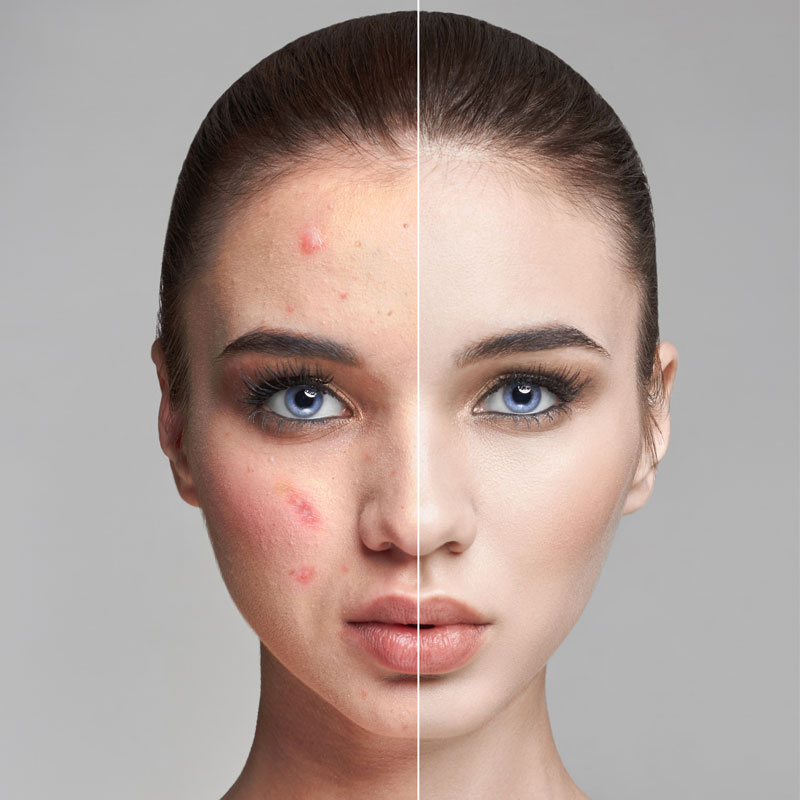Stress can impact our bodies in numerous ways, including our skin, which is often overlooked. A common manifestation of this is a stress rash, a skin reaction that can occur during high-stress situations. This article aims to provide a comprehensive understanding of stress rashes, their appearance, and effective treatment methods, especially in the context of medical UV treatment.
What Does a Stress Rash Look Like?
A stress rash, often confused with allergies or eczema, can manifest uniquely across different skin types and stress levels. It’s crucial to recognize these symptoms for accurate identification and treatment.
- On Legs: Here, one might notice red or pink spots, which are frequently itchy. These spots can cluster together, forming a larger, more noticeable rash. This type of stress rash, often referred to as ‘stress rash on legs,’ shares similarities with eczema stress rash but is specifically triggered by stress-related factors.
- On Stomach: This rash bears a resemblance to that on the legs, with red or pink itchy spots. However, the stomach rash might also exhibit occasional swelling, adding to discomfort. This particular manifestation, known as a ‘stress rash on stomach,’ can be alarming due to its sudden appearance and the potential for swelling.
- On Arms: Characterized by red spots that may be raised and itchy, this type of rash, often termed ‘stress rash on arms,’ can cause discomfort and irritation. These spots are a common physical response to heightened anxiety or stress levels.
- On Hands: The ‘stress rash on hands’ consists of small, itchy bumps, which sometimes fill with fluid. It’s important to differentiate this from common rashes, as stress-induced rashes on hands can be a tell-tale sign of underlying anxiety or stress.
- On Chest: Here, one may observe larger red patches, which are often more visible compared to other areas. Termed ‘stress rash on chest,’ these patches can be quite prominent and are a clear indicator of stress affecting the skin.
Statistics show that stress and anxiety can significantly impact skin health, with a notable percentage of dermatological patients reporting stress as a key factor in their skin conditions. The appearance of stress rashes can vary, but they typically include symptoms such as redness, itching, and in some cases, hives. These rashes are often misdiagnosed as allergic reactions or eczema due to their similar appearance.
The link between stress and skin health is well-established in medical research, with studies indicating that stress can exacerbate or even trigger skin conditions like eczema, psoriasis, and acne. In the case of a stress rash, the body’s response to anxiety and stress leads to a release of chemicals like histamine, which can cause itching and rashes. This phenomenon underscores the importance of managing stress for overall skin health.
Please note that, recognizing the various appearances of a stress rash is crucial for proper treatment. Whether it’s on the legs, stomach, arms, hands, or chest, these rashes are a physical manifestation of stress and require both dermatological treatment and stress management techniques for effective resolution.
How to Manage Stress Rash
A stress rash, often confused with allergies or eczema stress rash, can manifest uniquely across different skin types and stress levels. It’s crucial to recognize these symptoms for accurate identification and treatment.
- On Legs: Here, one might notice red or pink spots, which are frequently itchy. These spots can cluster together, forming a larger, more noticeable rash. This type of stress rash on legs shares similarities with eczema stress rash but is specifically triggered by stress-related factors.
- On Stomach: This rash bears a resemblance to that on the legs, with red or pink itchy spots. However, the stomach rash might also exhibit occasional swelling, adding to discomfort. This particular manifestation, known as a ‘stress rash on stomach,’ can be alarming due to its sudden appearance and the potential for swelling.
- On Arms: Characterized by red spots that may be raised and itchy, this type of rash, often termed ‘stress rash on arms,’ can cause discomfort and irritation. These spots are a common physical response to heightened anxiety or stress levels.
- On Hands: The ‘stress rash on hands’ consists of small, itchy bumps, which sometimes fill with fluid. It’s important to differentiate this from common rashes, as stress-induced rashes on hands can be a tell-tale sign of underlying anxiety or stress.
- On Chest: Here, one may observe larger red patches, which are often more visible compared to other areas. Termed ‘stress rash on chest,’ these patches can be quite prominent and are a clear indicator of stress affecting the skin.
Statistics show that stress and anxiety can significantly impact skin health, with a notable percentage of dermatological patients reporting stress as a key factor in their skin conditions. The appearance of stress rashes can vary, but they typically include symptoms such as redness, itching, and in some cases, hives. These rashes are often misdiagnosed as allergic reactions or eczema due to their similar appearance.
The link between stress and skin health is well-established in medical research, with studies indicating that stress can exacerbate or even trigger skin conditions like eczema, psoriasis, and acne. In the case of a stress rash, the body’s response to anxiety and stress leads to a release of chemicals like histamine, which can cause itching and rashes. This phenomenon underscores the importance of managing stress for overall skin health.
At last, recognizing the various appearances of a stress rash is crucial for proper treatment. Whether it’s on the legs, stomach, arms, hands, or chest, these rashes are a physical manifestation of stress and require both dermatological treatment and stress management techniques for effective resolution.
Duration and Treatment of Stress Rash
The duration of a stress rash can be variable, influenced by individual stress levels and skin sensitivity:
- Short-Term Cases: Studies suggest that a significant portion of stress rashes resolve within a few days, particularly with effective stress management or initial treatment.
- Longer Duration: For individuals with chronic stress, about 30-50% may experience prolonged symptoms, with the rash persisting for weeks or even longer if the underlying stress is not addressed.
Treatment Approaches
Effective treatment for a stress rash involves both medical interventions and home remedies:
- Professional Dermatological Treatment:
- Dermatologists report that targeted treatments, such as topical corticosteroids or antihistamines, are effective in about 70-80% of cases for reducing symptoms quickly.
- For exacerbated underlying skin conditions like eczema, additional treatments may be necessary, with efficacy rates varying based on the condition’s severity.
- Home Remedies for Immediate Relief:
- Cool Compresses: About 60% of patients find relief from symptoms like itching and inflammation through the application of cool compresses.
- Soothing Lotions: Over-the-counter lotions are reported to be effective in providing symptomatic relief in approximately 50-70% of cases.
- Stress Management: Incorporating stress reduction techniques has shown a positive impact on skin health, with studies indicating a reduction in skin symptoms in about 40-60% of individuals who actively manage their stress.
Preventative Measures
Preventative strategies are crucial in managing stress rashes:
- Regular Stress Management: Consistent stress management practices can significantly reduce the recurrence of stress-related skin issues.
- Skin Care Routine: A regular, gentle skin care routine can help in maintaining a robust skin barrier, essential for minimizing skin reactions to stress.
Understanding the potential duration and effective treatment options for a stress rash is essential for managing this condition. The combination of medical treatments, home remedies, and preventative measures plays a crucial role in providing relief and preventing future occurrences. Consulting healthcare professionals for personalized advice and treatment plans remains a key step in addressing stress rashes effectively.
Consulting a Professional for Stress Rash Management
When it comes to managing a stress rash, professional medical advice is indispensable. Here’s an expanded view on the importance of consulting a healthcare professional:
Importance of Professional Diagnosis
- Accurate Identification: A doctor, particularly a dermatologist or allergist, can accurately diagnose a stress rash. This is crucial since stress rashes can often mimic other skin conditions like allergic reactions, eczema, or psoriasis.
- Individualized Assessment: Each individual’s skin and stress response are unique. Professionals can assess the specific characteristics of your rash and your overall health to determine the most effective treatment plan.
Role of Dermatologists and Allergists
- Dermatologists: Specializing in skin conditions, dermatologists can identify whether a rash is indeed stress-related or a symptom of another skin disorder. They can prescribe topical treatments, oral medications, and provide guidance on skincare routines that can alleviate symptoms.
- Allergists: If there’s a suspicion that the rash might be allergy-related, an allergist can perform tests to rule out allergic causes. This is important for ensuring that the treatment plan targets the correct underlying issue.
Treatment Plan and Prescription
- Tailored Treatment: Based on the diagnosis, doctors can create a treatment plan tailored to your specific needs. This might include recommendations for over-the-counter remedies, prescription medications, or lifestyle modifications to manage stress.
- Follow-Up Care: Ongoing care and follow-up appointments can help in adjusting the treatment plan as needed, ensuring the most effective management of the stress rash.
Seeking Medical Advice Early
- Preventing Worsening of Symptoms: Early consultation with a healthcare provider can prevent the rash from worsening and reduce the risk of secondary infections or complications.
- Holistic Approach: Doctors can also offer advice on holistic approaches to manage stress, which is often the root cause of the rash.
Overall
Consulting a healthcare professional is a critical step in managing a stress rash effectively. Dermatologists and allergists provide valuable insights, accurate diagnoses, and tailored treatment plans. Their guidance not only addresses the immediate skin symptoms but also aids in managing the underlying stress, contributing to overall better health and wellbeing.
Stress rashes, while uncomfortable, are manageable with proper care and stress management. Always seek professional advice for treatment, and remember that managing stress is as important as treating the rash. If you’re experiencing symptoms of a stress rash, feel free to fill out our contact form for a consultation with our qualified experts.
Take the Next Step Towards Healthier Skin
If you’re experiencing symptoms of a stress rash or have concerns about your skin health, don’t hesitate to reach out. Our team of qualified experts is here to help. By filling out our contact form, you can schedule a consultation to receive personalized advice and treatment options. Remember, managing stress is just as important as treating the rash. Take control of your skin health today – we’re here to support you every step of the way.
